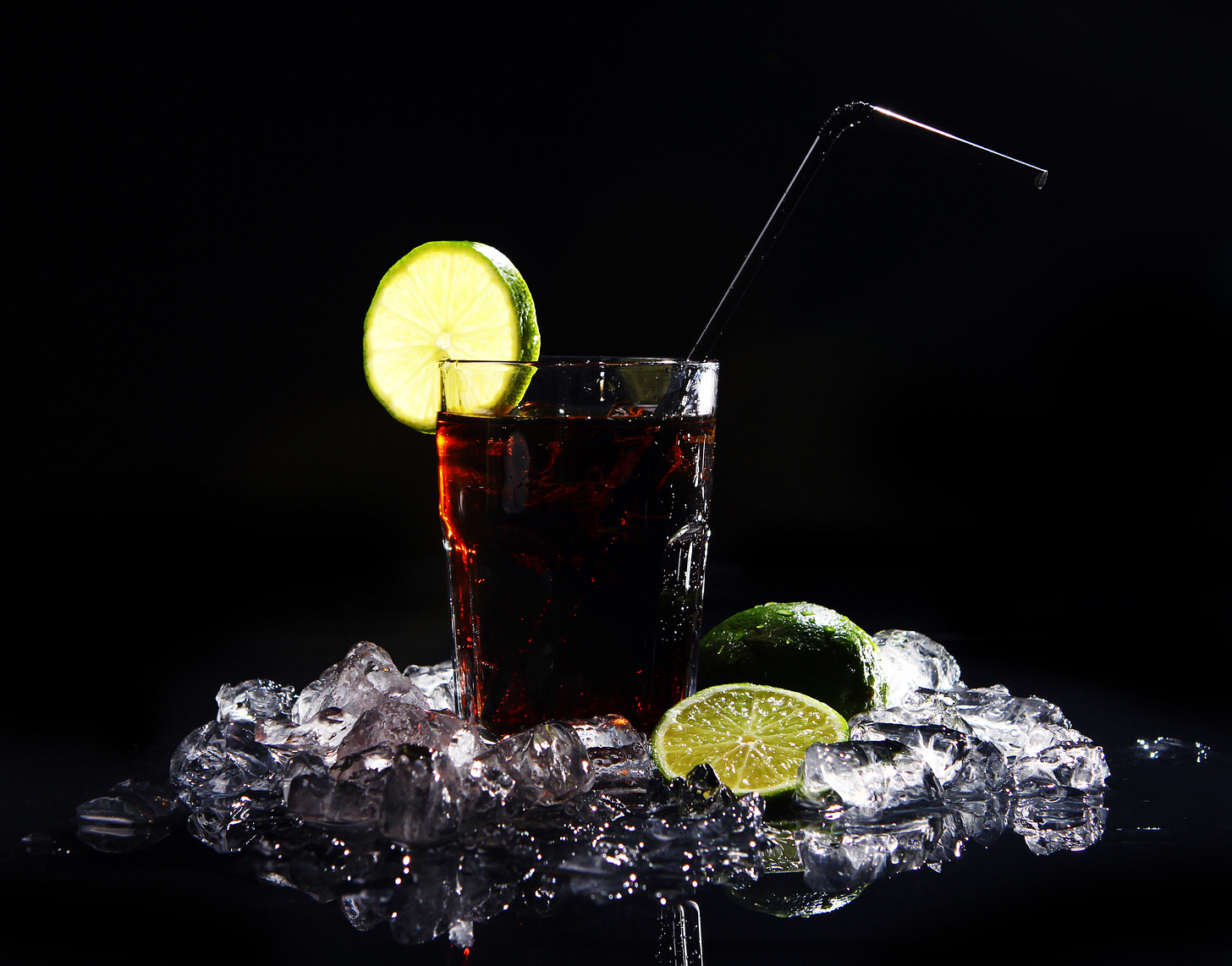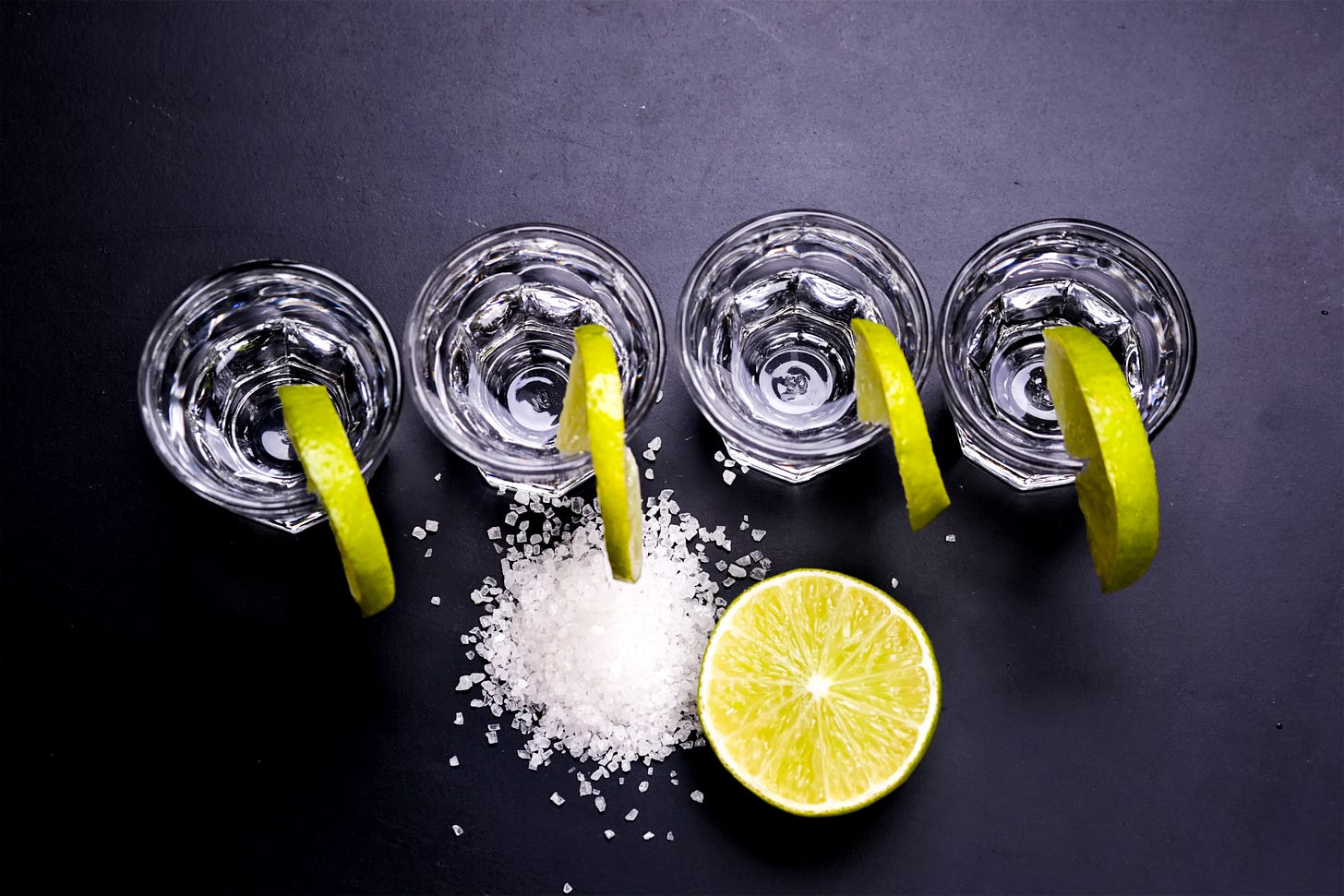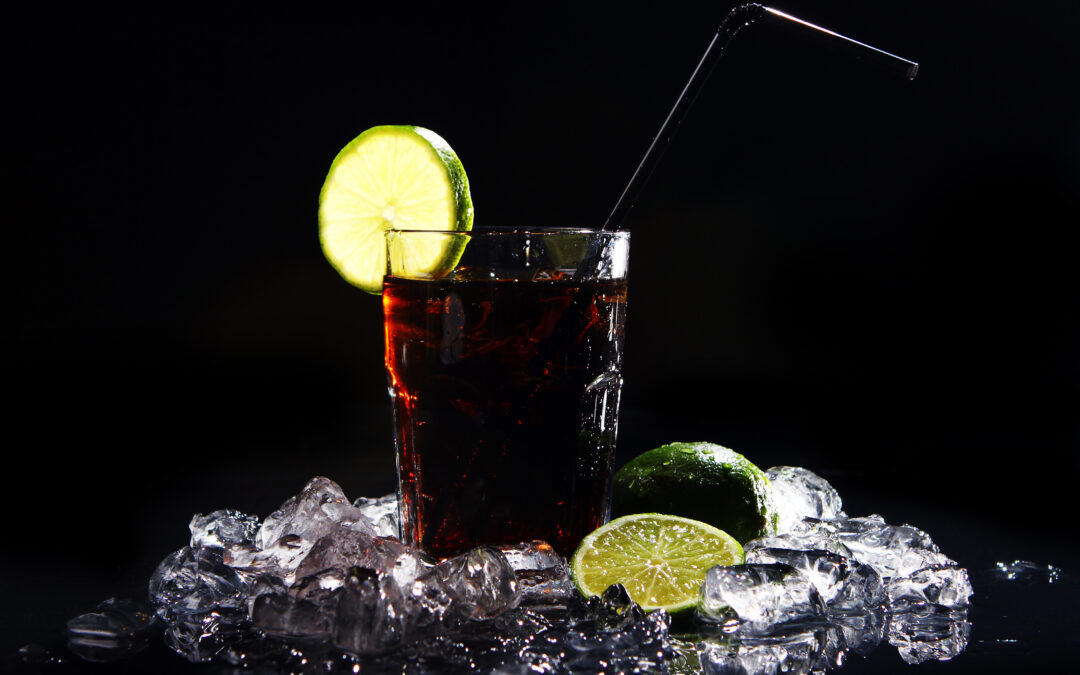
by Ross Kingsley | May 4, 2025 | LIQUORS: LIFT YOUR SPIRITS
The Cuba Libre is one of the simplest yet most iconic cocktails in the world, combining rum, cola, and lime. While its ingredients are straightforward, its history and cultural significance are rich with meaning, representing freedom, revolution, and celebration.
The Origins of the Cuba Libre
The name Cuba Libre, which translates to “Free Cuba,” is a direct nod to Cuba’s fight for independence from Spanish colonial rule in the late 19th century. The drink’s invention is believed to have occurred around 1900, during the American occupation of Cuba following the Spanish-American War.
Legend has it that American soldiers stationed in Havana mixed their imported Coca-Cola with Cuban rum, added a squeeze of lime, and toasted to a free Cuba with the phrase “¡Por Cuba Libre!” The drink quickly gained popularity among locals and became a symbol of liberation and unity.
Ingredients and Preparation
A traditional Cuba Libre requires only three ingredients:
-
Rum: Aged or light rum is typically used, depending on preference.
-
Cola: Classic Coca-Cola is the standard choice, offering sweetness and effervescence.
-
Lime: Freshly squeezed lime juice adds a tangy brightness and balances the drink.
To prepare, pour the rum over ice in a glass, add cola, and finish with a wedge of lime. The simplicity of the recipe belies the depth of its flavor and historical resonance.
Cultural Significance
The Cuba Libre is more than a cocktail—it’s a cultural icon that represents Cuban resilience and pride. Its popularity spread worldwide, symbolizing the fusion of American and Cuban influences. Whether enjoyed in Havana or at a bar across the globe, the Cuba Libre is a timeless reminder of freedom, history, and the enduring spirit of celebration.
Image by www.freepik.com
_ _ _
© Churrasco PHUKET STEAKHOUSE / ALL RIGHTS RESERVED
Churrasco Phuket Steakhouse serves affordable Wagyu and Black Angus steaks and burgers. We are open daily from 12noon to 11pm at Jungceylon Shopping Center in Patong / Phuket.
We are family-friendly and offer free parking and WiFi for guests. See our menus, reserve your table, find our location, and check all reviews here:
https://Churrascophuket.com/
#Churrascophuket #jungceylon #phuketsteakhouse #affordablewagyu #wagyu
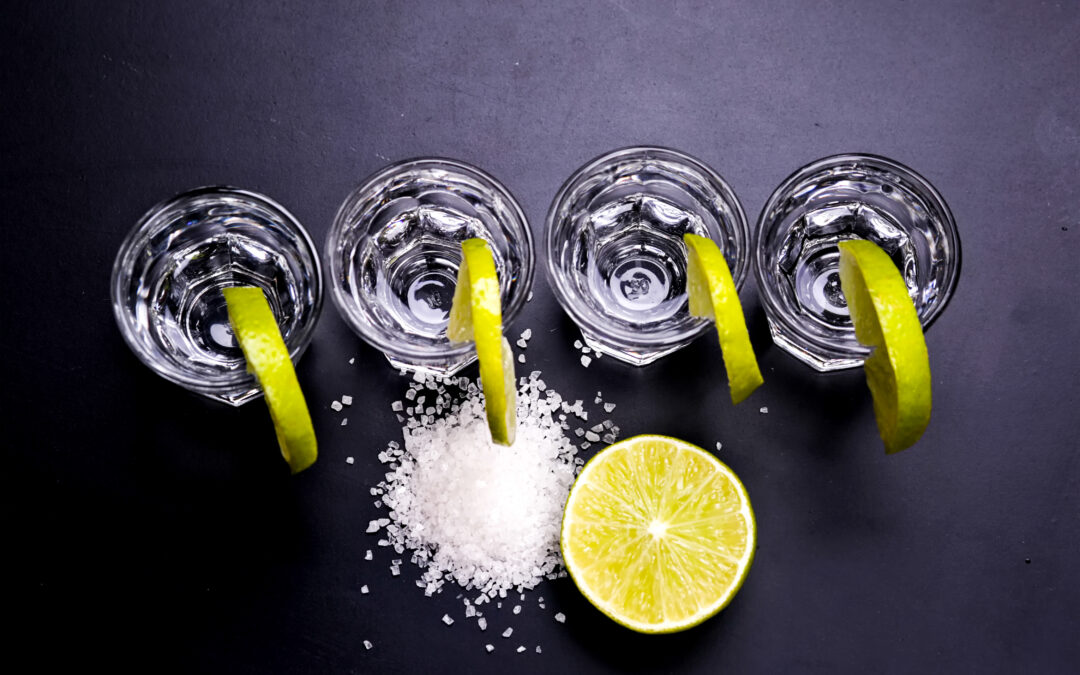
by Ross Kingsley | Apr 27, 2025 | LIQUORS: LIFT YOUR SPIRITS
Tequila, the iconic Mexican spirit, has earned a place in global culture as a go-to drink for celebrations and social gatherings. Made from the blue agave plant, tequila is as versatile as it is flavorful, lending itself to cocktails like margaritas or being enjoyed straight. One of the most popular ways to drink tequila, however, involves salt and lime—a ritual that has sparked curiosity for decades.
The History of Tequila
Tequila’s origins trace back to 16th-century Mexico, evolving from a fermented agave beverage known as pulque. By the 17th century, distillation refined the drink into what we now know as tequila. With its denomination of origin strictly tied to regions of Mexico, tequila is a cultural symbol and a key part of Mexican heritage.
The Salt and Lime Ritual
The practice of drinking tequila with salt and lime, often called “lick-sip-suck” or “lick-shoot-suck,” became popular as a way to mask the harshness of low-quality tequila in the mid-20th century. The steps are simple:
-
Lick a pinch of salt off your hand.
-
Take a shot of tequila.
-
Suck on a lime wedge.
This combination helps balance the flavors and smoothen the experience.
-
Salt: Salt enhances the flavor by dampening the sharp alcohol burn, allowing the tequila’s natural sweetness to come through.
-
Lime: Lime’s tangy acidity provides a refreshing counterbalance, cleansing the palate and masking residual harshness.
A Symbol of Celebration
While premium tequilas no longer need salt and lime to be enjoyed, the ritual persists as a fun and interactive way to drink tequila. It’s not just about taste—it’s a social activity that reflects the lively, communal spirit of Mexican culture. Whether you’re sipping or shooting, tequila remains a timeless celebration in a glass.
Image by www.freepik.com
_ _ _
© Churrasco PHUKET STEAKHOUSE / ALL RIGHTS RESERVED
Churrasco Phuket Steakhouse serves affordable Wagyu and Black Angus steaks and burgers. We are open daily from 12noon to 11pm at Jungceylon Shopping Center in Patong / Phuket.
We are family-friendly and offer free parking and WiFi for guests. See our menus, reserve your table, find our location, and check all reviews here:
https://Churrascophuket.com/
#Churrascophuket #jungceylon #phuketsteakhouse #affordablewagyu #wagyu
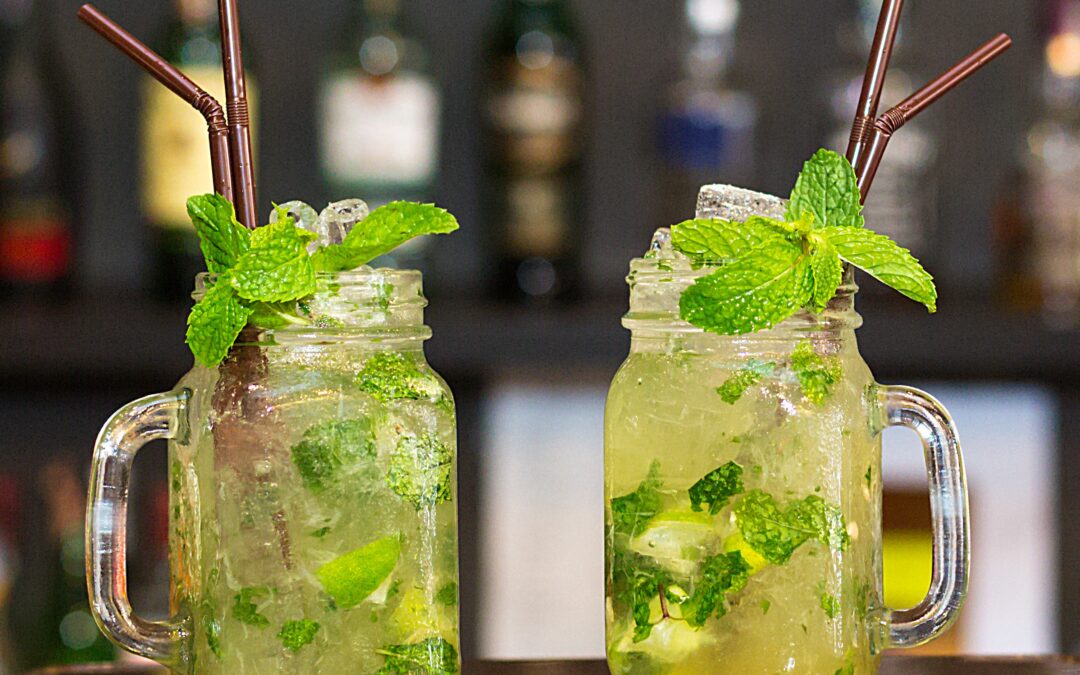
by Ross Kingsley | Apr 20, 2025 | LIQUORS: LIFT YOUR SPIRITS
The Mojito is one of the world’s most beloved cocktails, celebrated for its refreshing blend of mint, lime, sugar, and rum. Originating in Cuba, this drink has transcended its roots to become a symbol of relaxation, tropical vibes, and social connection. It is one of two best-selling cocktails at Churrasco Phuket Steakhouse.
A Brief History of the Mojito
The Mojito’s origins date back to 16th-century Cuba, where it was initially known as “El Draque,” named after Sir Francis Drake. Legend has it that the concoction of aguardiente (a precursor to rum), lime, sugar, and mint was used to prevent scurvy among sailors and to mask the harsh taste of early liquors.
As rum production advanced, aguardiente was replaced with refined rum, and the Mojito as we know it was born. By the 20th century, it became a staple in Cuban bars, gaining global fame thanks to Ernest Hemingway, who enjoyed it (apparently too much) at La Bodeguita del Medio in Havana.
Key Ingredients
A classic Mojito consists of five main ingredients:
-
White rum: Provides a smooth and light alcoholic base.
-
Fresh lime juice: Adds tangy, citrusy brightness.
-
Mint leaves: Offers a cooling herbal aroma.
-
Sugar: Balances the tartness of lime and enhances flavors.
-
Soda water: Adds effervescence and dilutes the drink for refreshment.
These ingredients are muddled and mixed to create a harmonious balance of sweet, sour, and herbal flavors.
Cultural Significance
The Mojito is more than a drink; it’s a cultural icon of Cuban heritage. It embodies the laid-back Caribbean lifestyle and is a symbol of celebration and hospitality. Today, it’s a favorite worldwide, enjoyed at beachside bars, upscale restaurants, and casual gatherings.
Whether sipped in its birthplace or recreated abroad, the Mojito remains a timeless reminder of Cuba’s rich history and vibrant culture.
_ _ _
© Churrasco PHUKET STEAKHOUSE / ALL RIGHTS RESERVED
Churrasco Phuket Steakhouse serves affordable Wagyu and Black Angus steaks and burgers. We are open daily from 12noon to 11pm at Jungceylon Shopping Center in Patong / Phuket.
We are family-friendly and offer free parking and WiFi for guests. See our menus, reserve your table, find our location, and check all reviews here:
https://Churrascophuket.com/
#Churrascophuket #jungceylon #phuketsteakhouse #affordablewagyu #wagyu

by Ross Kingsley | Apr 13, 2025 | LIQUORS: LIFT YOUR SPIRITS
Absinthe and Pastis are two of the world’s most iconic anise-flavored spirits, both celebrated for their cloudy appearance when mixed with water and their place in European drinking culture. Despite similarities, they are quite different in origin, composition, alcohol strength, preparation, and cultural associations. Understanding the distinctions between them offers not only a better appreciation, but also a deeper look into the evolution of European drinking traditions over the last two centuries.
Absinthe predates Pastis by nearly a hundred years and is often associated with bohemian life in late 19th-century Europe. It was famously favored by artists and writers such as Vincent van Gogh, Henri de Toulouse-Lautrec, Oscar Wilde, and Ernest Hemingway. With its vivid green color and nickname “la fée verte” (the green fairy), Absinthe became a symbol of creative expression and rebellion. Its key ingredients are a mix of botanicals, including green anise, sweet fennel, and most importantly, wormwood (Artemisia absinthium). Wormwood contains a chemical compound called thujone, which was once believed to be psychoactive and even hallucinogenic.
These fears contributed to Absinthe’s widespread ban in the early 1900s across Europe and the United States. For decades, it was accused of causing madness, violence, and moral decay. Modern science has since debunked these claims, showing that thujone is present only in trace amounts and not dangerous at typical levels of consumption. In recent years, Absinthe has made a legal comeback in most countries, though its mystique remains firmly intact. Today’s Absinthes generally range from 45% to 74% alcohol by volume, putting them firmly among the strongest spirits available.
Pastis, by contrast, was developed in France during the 1930s as a legal and safer-tasting alternative to Absinthe. With Absinthe outlawed, there remained a strong public demand for anise-based drinks, especially in southern France. Paul Ricard is credited with popularizing Pastis, which quickly became a staple in bars and cafés across the country. Pastis is made with star anise and licorice root, along with other aromatic herbs and spices. Unlike Absinthe, it does not contain wormwood or thujone. Its flavor is sweeter, rounder, and less bitter, which helped make it more broadly appealing. The alcohol content of Pastis typically falls between 40% and 45% ABV.
How the two drinks are served also reflects their different traditions. Absinthe has a ritualistic method of preparation: a sugar cube is placed on a slotted spoon resting over a glass of Absinthe, and cold water is slowly dripped over the sugar to dissolve it. This process dilutes the strong alcohol while creating the louche effect—an opalescent cloudiness caused by the precipitation of essential oils. Pastis also turns cloudy when mixed with water, but the preparation is simpler and more casual: five parts cold water to one part Pastis, stirred or poured directly into a glass with ice. No sugar or ceremony is needed.
Culturally, Absinthe is linked to the smoky cafés of Montmartre and the avant-garde circles of Paris and beyond. It evokes a time of artistic upheaval and decadent experimentation. Pastis, on the other hand, is the drink of warm Mediterranean afternoons in Provence or Marseille. It is an everyday aperitif, sipped slowly while playing pétanque or enjoying a shaded terrace.
In essence, Absinthe and Pastis are two different answers to the same question: how to enjoy the bold, aromatic flavor of anise. One is steeped in controversy and complexity; the other in sun-drenched simplicity. While they may look similar in the glass, especially after water is added, their stories, ingredients, strength, and cultural resonance couldn’t be more different. Whether you prefer the historic allure of Absinthe or the easygoing charm of Pastis, both offer a uniquely satisfying glimpse into European drinking heritage.
Image Credit: https://wikipedia.org
_ _ _
© CHURRASCO PHUKET STEAKHOUSE / ALL RIGHTS RESERVED
Reprinting, reposting & sharing allowed, in exchange for a backlink and credits
Churrasco Phuket Steakhouse serves affordable Wagyu and Black Angus steaks and burgers. We are open daily from 12noon to 11pm at Jungceylon Shopping Center in Patong / Phuket.
We are family-friendly and offer free parking and Wi-Fi for guests. See our menus, reserve your table, find our location, and check all guest reviews here:
https://ChurrascoPhuket.com/
#Churrascophuket #jungceylon #phuketsteakhouse #affordablewagyu #wagyu

by Ross Kingsley | Apr 6, 2025 | LIQUORS: LIFT YOUR SPIRITS
Kirsch, short for kirschwasser (German for “cherry water”), is a clear, dry cherry brandy that has been distilled for centuries. Unlike sweet cherry liqueurs, kirsch is unsweetened and carries a distinctly pure fruit profile with subtle almond notes from the cherry stones. It is a staple in European distillation traditions, particularly in Germany, Switzerland, and France’s Alsace region.
Origins and History
The roots of kirsch trace back to the Black Forest region of Germany, where distillation of fermented cherries began in the late Middle Ages. The tradition spread into Switzerland and Alsace, regions that remain central to its production. Historically, kirsch was distilled by farmers and small producers, using wild and cultivated cherries from local orchards. Over time, it became a refined spirit, appreciated both for drinking and culinary applications.
Production and Ageing
Kirsch is made from ripe, whole cherries, including their pits, which contribute to the spirit’s characteristic nutty undertone. The fruit is crushed and left to ferment naturally, after which the mash undergoes double distillation in copper pot stills. Unlike aged brandies, kirsch is typically unaged, preserving its fresh fruit character. Some producers rest it in glass demijohns or stainless steel tanks to allow subtle oxidation without altering the clarity of the liquid.
Countries of Production
Germany, Switzerland, and France remain the key producers of kirsch, with traditional methods still widely practiced. Austria and Luxembourg also produce versions, while some distillers in the United States have experimented with cherry brandies inspired by European styles. In these regions, kirsch is protected under geographical indications, ensuring authenticity in production methods and fruit sourcing.
How to Drink Kirsch
Kirsch is best enjoyed neat, served slightly chilled in a tulip-shaped glass to concentrate its delicate aromas. It is also used in cocktails, adding depth to classics like the Aviation. In culinary traditions, it features in desserts such as Black Forest cake and Swiss fondue, where a splash enhances both flavor and texture.
Notable Producers
Several distilleries have upheld the tradition of quality kirsch production. Schladerer (Germany) is known for its smooth, fruit-forward style. Morand (Switzerland) produces a well-regarded version using Valais-grown cherries. G. Miclo (France) crafts an Alsatian kirsch with pronounced almond notes. Etter (Switzerland) maintains a legacy of precision distillation. Fassbind (Switzerland), one of the oldest producers, balances fruit intensity with refinement. German producers Alfred Schladerer, Ziegler, and Kammer-Kirsch each bring distinct regional expressions, using high-quality cherries and time-honored distillation techniques.
Kirsch remains a niche spirit, appreciated for its purity and craftsmanship. Whether sipped on its own or used in cooking, it reflects a long-standing European tradition of cherry distillation.
Image Credit: https://schladerer.de
_ _ _
© CHURRASCO PHUKET STEAKHOUSE / ALL RIGHTS RESERVED
Reprinting, reposting & sharing allowed, in exchange for a backlink and credits
Churrasco Phuket Steakhouse serves affordable Wagyu and Black Angus steaks and burgers. We are open daily from 12noon to 11pm at Jungceylon Shopping Center in Patong / Phuket.
We are family-friendly and offer free parking and Wi-Fi for guests. See our menus, reserve your table, find our location, and check all guest reviews here:
https://ChurrascoPhuket.com/
#Churrascophuket #jungceylon #phuketsteakhouse #affordablewagyu #wagyu

by Ross Kingsley | Mar 30, 2025 | LIQUORS: LIFT YOUR SPIRITS
Vodka is deeply ingrained in Eastern European culture, and Ukraine stands as one of the most historically significant producers. While Russian and Polish vodkas often dominate the global market, Ukrainian vodka has a unique identity shaped by centuries of tradition and meticulous craftsmanship. Despite its exceptional quality, Ukrainian vodka remains relatively under-represented internationally.
Origins and History
The origins of vodka in Ukraine date back to at least the 14th century. Unlike the Russian term “vodka,” which translates to “little water,” the Ukrainian word Horilka is derived from “hority” (to burn), referring to its characteristic warming effect. Traditionally, Horilka was often infused with herbs, spices, or honey, making it distinct from the purer, more neutral varieties that later became popular.
During the Cossack era, Horilka became an integral part of Ukrainian culture, frequently produced in home distilleries or small-scale operations. By the 19th and 20th centuries, industrial production took hold, refining methods and elevating Ukrainian vodka to some of the highest standards in Eastern Europe.
How It Differs from Russian and Polish Vodka
While all these three Eastern European nations – Ukraine, Russia, and Poland – produce vodka of exceptional quality, they differ in key ways:
-
Base Ingredients: Ukrainian vodka is primarily made from wheat or corn, resulting in a smoother and slightly sweeter taste. Russian vodka often uses rye, giving it a sharper, peppery finish, while Polish vodka frequently relies on potatoes, making it heavier and creamier.
-
Filtration Techniques: Ukrainian vodka brands employ advanced charcoal, silver, or milk-based filtration, leading to a notably smooth product.
-
Cultural Influence: Russian vodka is traditionally consumed straight, while Ukrainian Horilka has strong folk traditions, often infused with chili, honey, or berries for additional flavors.
Notable Ukrainian Vodka Brands
Ukraine has several premium vodka brands, many of which are highly regarded within Eastern Europe but remain lesser-known internationally. Hlibny Dar is one of the country’s best-selling vodkas, appreciated for its smoothness and high purity. It is served at Churrasco Phuket Steakhouse. Another major player is Nemiroff, which has gained international recognition, particularly for its flavored varieties like the distinctive Honey Pepper Vodka. Khortytsa stands out for its use of artesian water and advanced filtration techniques, producing a refined and exceptionally smooth product.
Medoff is notable for its honey-based filtration process, which results in a softer, more delicate taste, while Prime Vodka, a premium wheat-based spirit, rivals some of the best Russian and Polish brands. For those seeking a more traditional experience, Pervak offers rustic-style horilka, often infused with bold natural flavors such as chili, garlic, or honey. Meanwhile, Zirkova has carved a niche in the Canadian market, focusing on high-quality wheat-based vodka that emphasizes purity and smoothness.
Other respected brands include Mernaya, known for its crystal-clear purity and classic wheat profile, and Status, which positions itself as a luxury vodka for premium connoisseurs. Smaller, artisanal producers like Borysfen continue to refine Ukraine’s vodka legacy, distilling in small batches to create unique and carefully crafted spirits. These brands collectively represent Ukraine’s rich vodka-making tradition, demonstrating the country’s commitment to quality and innovation in the global spirits industry.
Why Ukrainian Vodka Has Limited International Reach
Despite its high quality, Ukrainian vodka has faced several barriers to gaining global recognition:
-
Market Dominance by Russia and Poland – Decades of strong marketing and established distribution networks have given Russian and Polish vodkas a firm hold on the global market.
-
Geopolitical Challenges – Political instability, trade restrictions, and conflicts have hampered the expansion of Ukrainian exports.
-
Branding and Marketing Limitations – Ukrainian producers primarily focus on domestic and regional markets, with fewer large-scale international marketing campaigns compared to competitors like Absolut (Sweden) or Belvedere (Poland).
-
Export and Distribution Barriers – While some brands like Nemiroff and Zirkova have gained international traction, many others struggle to secure global distribution due to logistical and regulatory challenges.
Conclusion
Ukrainian vodka is a hidden gem that deserves greater recognition on the world stage. With its rich history, high-quality production methods, and unique character, it has the potential to compete with the best-known vodkas globally. While geopolitical and market challenges remain, the rising global interest in craft and regional spirits may provide new opportunities for Ukrainian vodka to expand its reach in the future.
Image Credit: https://bayaderagroup.com/en/brands/ukrainian/hlibny-dar
_ _ _
© CHURRASCO PHUKET STEAKHOUSE / ALL RIGHTS RESERVED
Reprinting, reposting & sharing allowed, in exchange for a backlink and credits
Churrasco Phuket Steakhouse serves affordable Wagyu and Black Angus steaks and burgers. We are open daily from 12noon to 11pm at Jungceylon Shopping Center in Patong / Phuket.
We are family-friendly and offer free parking and Wi-Fi for guests. See our menus, reserve your table, find our location, and check all guest reviews here:
https://ChurrascoPhuket.com/
#Churrascophuket #jungceylon #phuketsteakhouse #affordablewagyu #wagyu


